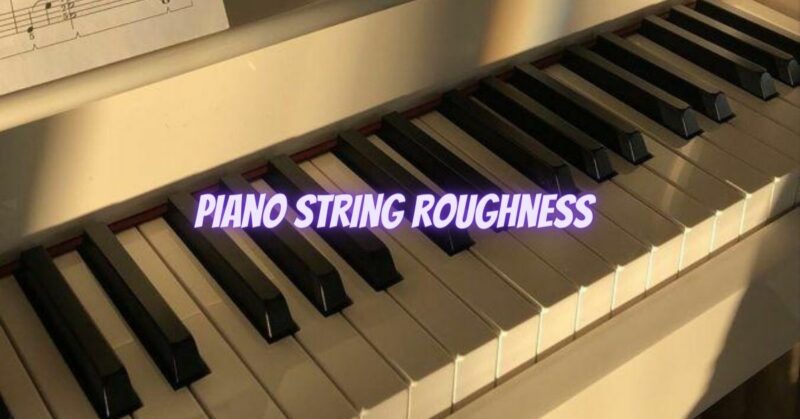The quality of piano strings directly impacts the instrument’s sound, playability, and overall performance. Over time, piano strings can develop roughness, affecting the tone and touch of the piano. Understanding the causes, effects, and remedies of piano string roughness can help pianists and technicians address this issue effectively.
Causes of Piano String Roughness:
- Oxidation: Piano strings are made of high-carbon steel or sometimes copper-wound steel. Exposure to air and moisture can lead to oxidation, causing the strings to lose their smoothness and develop a rough surface.
- Dirt and Dust: Accumulated dirt, dust, and debris on the strings can contribute to roughness, reducing the clarity and resonance of the piano’s sound.
- String Wear: Continuous playing, especially with heavy use, can lead to gradual string wear and roughness at contact points, such as where the hammers strike the strings.
- String Age: As piano strings age, they can lose their elasticity and become more susceptible to developing roughness.
Effects of Piano String Roughness:
- Reduced Sound Quality: Rough piano strings can produce a dull, muffled, or harsh tone, diminishing the piano’s overall sound quality and expressive capabilities.
- Limited Dynamic Range: Rough strings may affect a piano’s dynamic range, making it challenging for the pianist to achieve the desired softness or loudness.
- Inconsistent Touch Response: Piano strings with rough spots can cause uneven hammer-string contact, resulting in an inconsistent touch response across the keyboard.
- Difficulty in Playing Fast Passages: Rough strings can impede smooth key movement, making it difficult to play fast passages accurately and comfortably.
Remedies for Piano String Roughness:
- Regular Cleaning: Routine cleaning of piano strings with a soft, clean cloth can prevent dirt and debris buildup and maintain smoother surfaces.
- Lubrication: Applying a small amount of piano string lubricant on the rough areas can reduce friction and help restore smoothness to the strings. It is crucial to use piano-specific lubricants to avoid damage to the strings and other components.
- String Replacement: If the roughness is caused by significant wear or aging, replacing the affected strings may be necessary. Piano technicians can help assess the condition of the strings and recommend replacements when needed.
- Proper Humidity Control: Maintaining the correct humidity level in the piano environment helps prevent oxidation and slows down the aging process of the strings.
- Regular Maintenance: Scheduling regular piano maintenance, including string cleaning and tuning, can ensure that the piano strings stay in optimal condition.
Note:
- When dealing with piano string roughness, it is crucial to seek assistance from a professional piano technician. Attempting to fix the issue without proper knowledge or tools can lead to further damage.
- Piano string roughness may be a symptom of other underlying problems with the instrument. A qualified technician can conduct a thorough assessment and address any additional issues affecting the piano’s performance.
By understanding the causes and effects of piano string roughness and implementing proper maintenance practices, pianists and technicians can preserve the integrity of the strings and ensure that the piano continues to produce the rich, resonant tones that make it a beloved musical instrument.


